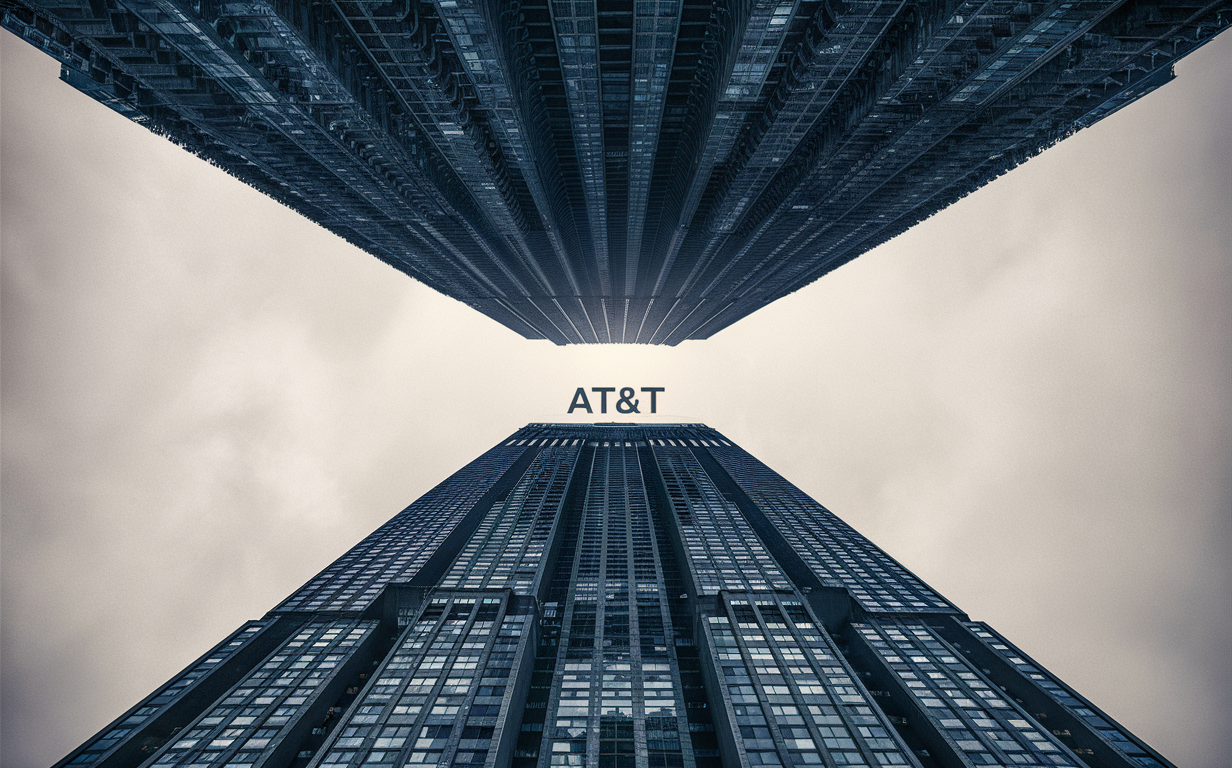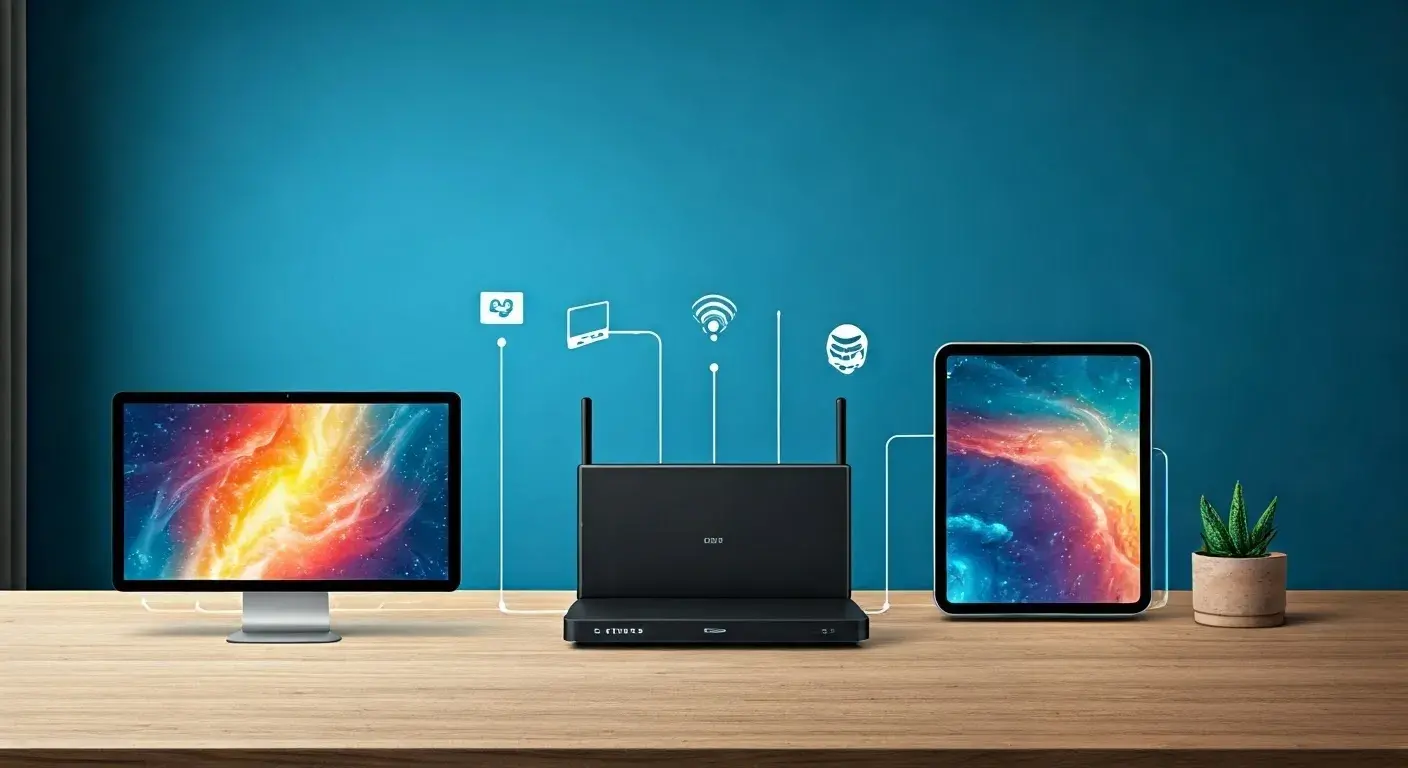Who is bigger than AT&T?

This article explores the competitive landscape of telecommunications and technology, identifying companies that rival or surpass AT&T in various metrics. We delve into market capitalization, revenue, innovation, and global reach, comparing AT&T with giants like Verizon, T-Mobile, and major tech conglomerates such as Alphabet (Google) and Meta, providing a comprehensive 2025 perspective.
Who is Bigger Than AT&T? A 2025 Competitive Analysis
In the dynamic world of telecommunications and technology, the question of which company reigns supreme is a complex one, constantly evolving with market shifts, technological advancements, and strategic acquisitions. AT&T, a venerable giant with a long history in connectivity, remains a dominant force. However, as of 2025, several other entities not only compete with AT&T but in specific metrics, significantly surpass it. This analysis aims to provide a comprehensive overview, looking beyond simple revenue figures to encompass market capitalization, global reach, innovation, and influence across various technological sectors. We will explore the direct telecommunications competitors, as well as the burgeoning tech conglomerates whose tentacles are increasingly intertwined with the very fabric of global communication infrastructure.
Understanding the competitive landscape requires a nuanced approach. AT&T's core business has traditionally been providing voice and data services, mobile networks, and broadband internet. Yet, the definition of "telecommunications" has broadened dramatically. Today, it encompasses cloud computing, artificial intelligence, content delivery, and the underlying infrastructure that powers the digital economy. Therefore, to accurately assess who is "bigger," we must consider a multifaceted array of indicators and the strategic positioning of various industry players in the current 2025 market.
Understanding the Metrics: How We Define "Bigger"
The term "bigger" can be interpreted in several ways, each offering a different perspective on a company's scale and influence. For a comprehensive comparison, we will examine AT&T against its peers using the following key metrics:
Market Capitalization
Market capitalization, or "market cap," represents the total market value of a company's outstanding shares. It is calculated by multiplying the current share price by the total number of outstanding shares. This is often considered the most straightforward indicator of a company's size and investor valuation. As of early 2025, AT&T's market cap fluctuates but generally places it among the top-tier companies, though often behind some of the largest technology firms.
Annual Revenue
Annual revenue is the total income generated from sales of goods or services over a fiscal year. While market cap reflects investor sentiment, revenue directly indicates the volume of business a company conducts. AT&T consistently reports hundreds of billions of dollars in annual revenue, positioning it as a major economic entity. However, some diversified tech giants can eclipse this figure through their vast array of products and services.
Global Reach and Subscriber Base
For a telecommunications company, the number of subscribers (mobile, broadband, pay-TV) and the geographical spread of its operations are critical. AT&T boasts tens of millions of wireless and broadband subscribers primarily in the United States. Companies with a significant international presence, or those whose services are used by billions globally (like those of major tech platforms), can be considered "bigger" in terms of sheer user reach.
Innovation and Technological Leadership
In the rapidly evolving tech landscape, a company's ability to innovate and lead in emerging technologies (like 5G, AI, cloud computing, quantum computing) is a crucial measure of its future relevance and influence. This includes R&D investment, patent filings, and the development of groundbreaking products and services. While AT&T invests heavily in 5G and network infrastructure, other companies are at the forefront of AI development, software innovation, and digital platform creation.
Employee Count and Assets
The number of employees and the total value of a company's assets (infrastructure, real estate, intellectual property) also contribute to its overall scale. AT&T, with its vast network infrastructure and workforce, is a significant employer. However, the sheer scale of operations for global tech companies can also translate into massive workforces and asset portfolios.
The Telecom Titans: Verizon, T-Mobile, and Beyond
When directly comparing AT&T with its primary telecommunications rivals in the United States, the picture becomes clearer, though still competitive. As of early 2025, the landscape is dominated by three major players: AT&T, Verizon, and T-Mobile.
Verizon Communications Inc.
Verizon is AT&T's most direct and significant competitor in the U.S. wireless market. Often, Verizon rivals or surpasses AT&T in market capitalization and revenue, depending on the specific quarter and market conditions. Verizon is renowned for its robust network infrastructure, particularly its early and aggressive rollout of 5G. In terms of wireless subscriber numbers, the two companies are often neck-and-neck, vying for the top spot. Verizon's strategic focus has also been on premium network quality and enterprise solutions. While AT&T has diversified into media and entertainment (though with recent divestitures), Verizon has also explored content and advertising, though with less emphasis than its rival.
T-Mobile US, Inc.
T-Mobile has undergone a remarkable transformation, especially after its merger with Sprint. In 2025, T-Mobile is a formidable competitor, often surpassing AT&T and Verizon in wireless subscriber growth and, at times, in market capitalization due to its aggressive pricing and expansion of its 5G network. T-Mobile has positioned itself as the "Un-carrier," focusing on customer-centric plans and rapid 5G deployment, particularly in the mid-band spectrum which offers a strong balance of speed and coverage. While AT&T and Verizon have historically commanded higher average revenue per user (ARPU) due to their more affluent customer bases and bundled services, T-Mobile's sheer volume of subscribers and its continued network expansion make it a company that is undoubtedly "bigger" in terms of its dynamic market impact and growth trajectory in the wireless sector.
International Telecom Players
While AT&T's primary focus is the U.S. market, global telecommunications companies often dwarf it in terms of overall revenue and subscriber base due to their operations across multiple continents. Companies like China Mobile (the world's largest mobile carrier by subscribers), Vodafone (a major player in Europe and Africa), and Deutsche Telekom (parent company of T-Mobile) have vast international footprints. For instance, China Mobile alone serves hundreds of millions of subscribers, a number far exceeding AT&T's domestic base. These companies are critical players in the global connectivity ecosystem, influencing standards and driving infrastructure development worldwide.
The Tech Giants: Alphabet (Google) and Meta's Growing Influence
The definition of "telecommunications" has expanded significantly, and it's in this broader context that tech giants like Alphabet (Google's parent company) and Meta Platforms (Facebook's parent company) emerge as entities that are arguably "bigger" than AT&T in terms of market capitalization, innovation, and influence over digital life.
Alphabet Inc. (Google)
As of 2025, Alphabet's market capitalization consistently places it among the top 3-5 largest companies globally, often significantly exceeding AT&T's valuation. Alphabet's influence extends far beyond its search engine dominance. Its core businesses include:
- Google Cloud: A major competitor in the cloud computing market, providing infrastructure, platforms, and services to businesses worldwide. This directly competes with and often surpasses the enterprise IT services offered by telecom companies.
- Android OS: The most widely used mobile operating system globally, powering billions of smartphones. This ecosystem is fundamental to mobile communication and data access.
- YouTube: The world's largest video-sharing platform, a massive content delivery network.
- AI and Machine Learning: Alphabet is a leader in AI research and development, powering many of its services and offering AI solutions to enterprises.
- Waymo: A pioneer in autonomous driving technology, representing future mobility and connectivity.
While AT&T provides the pipes, Alphabet increasingly controls the content, services, and intelligence that flow through them. Its revenue, driven by advertising, cloud services, and hardware, is substantial, and its market cap often places it in a different league than traditional telecom providers.
Meta Platforms, Inc.
Meta, the parent company of Facebook, Instagram, WhatsApp, and Oculus, is another tech behemoth whose market capitalization frequently surpasses AT&T's. Its core business is social networking and digital advertising, connecting billions of people globally. However, Meta's ambitions extend into the metaverse, virtual reality, and augmented reality, areas that will likely redefine future communication and interaction. Its vast user base, data analytics capabilities, and significant investments in emerging technologies make it a dominant force in the digital landscape. While Meta doesn't operate cellular networks, it relies heavily on the infrastructure provided by companies like AT&T, yet its influence over user engagement, data, and future digital experiences is profound.
Beyond Traditional Telecom: Cloud Providers and Infrastructure
The infrastructure that underpins modern communication is increasingly being built and managed by cloud computing giants. These companies are not just service providers; they are foundational to the digital economy, and in many respects, their scale and strategic importance are immense.
Microsoft Corporation
Microsoft, with its robust Azure cloud platform, enterprise software dominance, and significant investments in AI, is another tech titan whose market capitalization consistently ranks among the highest globally, often exceeding AT&T's. Azure is a direct competitor to Google Cloud and Amazon Web Services (AWS), providing critical infrastructure for businesses worldwide. Microsoft's reach into enterprise IT, operating systems, productivity software, and now AI integration makes it a pervasive force in the technological ecosystem. Its revenue and strategic importance in enabling digital transformation for businesses make it a company that is undeniably "bigger" than AT&T in terms of its comprehensive technological impact and market valuation.
Amazon.com, Inc.
Amazon Web Services (AWS) is the undisputed leader in cloud computing infrastructure. While Amazon's retail operations generate massive revenue, AWS is a profit powerhouse and a critical component of the global digital infrastructure. Many communication services, applications, and data centers rely on AWS. Amazon's market capitalization is consistently among the highest in the world. AWS's scale, innovation, and the sheer volume of data and services it hosts make it a foundational element of the modern internet, placing it in a category of scale that AT&T, as a service provider, operates within but does not command in the same foundational way.
Nvidia Corporation
While not a direct competitor in traditional telecom services, Nvidia has become critically important due to its dominance in GPUs (Graphics Processing Units), which are essential for AI, machine learning, and high-performance computing. As AI becomes increasingly integrated into all aspects of communication and technology, Nvidia's role as a hardware enabler is paramount. Its market capitalization has surged, often surpassing traditional tech giants and certainly AT&T, reflecting its pivotal position in the future of computing and AI-driven services.
Innovation and Future Prospects: Where AT&T Stands
AT&T's strategic decisions in recent years have focused on streamlining its operations and reinvesting in its core network infrastructure, particularly 5G and fiber broadband. While it has divested significant media assets (like WarnerMedia), this move allows it to concentrate resources on becoming a leading provider of connectivity solutions.
5G Leadership and Network Modernization
AT&T has been a major investor in 5G technology, aiming to deploy a robust and widespread network. In 2025, its 5G network is considered one of the most extensive in the U.S., particularly its mid-band spectrum deployment which offers a good balance of speed and coverage. This is crucial for enabling new applications in areas like IoT, autonomous systems, and enhanced mobile broadband. The company is also heavily investing in fiber optic broadband, which is essential for high-speed internet access and as a backbone for its wireless networks.
Enterprise Solutions and Edge Computing
AT&T is increasingly focusing on enterprise clients, offering advanced connectivity solutions, private 5G networks, and edge computing services. Edge computing, which brings processing power closer to the data source, is vital for low-latency applications. By partnering with cloud providers and developing its own edge infrastructure, AT&T aims to capture a significant share of the business market that relies on high-performance, secure, and responsive networks.
Strategic Partnerships
To compete effectively, AT&T is forging strategic partnerships. These include collaborations with cloud providers like Microsoft Azure and Amazon Web Services to offer integrated solutions, as well as partnerships with technology companies to develop new applications and services leveraging its network capabilities. These alliances are critical for staying competitive in a rapidly evolving technological landscape.
AT&T's Strengths and Strategic Moves in 2025
Despite the presence of larger entities in terms of market cap and revenue, AT&T possesses significant strengths that ensure its continued relevance and competitive edge.
Vast Infrastructure Footprint
AT&T operates one of the largest and most sophisticated network infrastructures in the United States. This includes extensive fiber optic networks, a widespread wireless network, and significant data center capacity. This foundational asset is crucial for delivering reliable and high-performance connectivity services, a core requirement for all digital activities.
Large and Loyal Customer Base
With tens of millions of wireless and broadband subscribers, AT&T has a substantial and often loyal customer base. This provides a stable revenue stream and a platform for introducing new services. The company's focus on customer service and bundled offerings aims to retain and grow this base.
Enterprise Market Focus
AT&T has strategically shifted its focus towards the enterprise market, offering sophisticated solutions for businesses, including private 5G networks, cybersecurity, IoT, and cloud connectivity. This high-margin segment is critical for future growth and allows AT&T to leverage its network expertise beyond consumer services.
Divestitures for Strategic Clarity
The divestiture of its media assets, while a significant strategic shift, has allowed AT&T to deleverage its balance sheet and focus capital on its core connectivity businesses. This strategic clarity is crucial for navigating the competitive telecom landscape and investing in future technologies like 5G and fiber.
Navigating the Complex Ecosystem
The lines between telecommunications, technology, and media are increasingly blurred. Companies like AT&T are no longer just infrastructure providers; they are integral to the digital ecosystem. The tech giants, while not operating traditional networks, are shaping how we communicate, consume information, and interact digitally. This creates a symbiotic, albeit competitive, relationship.
For instance, AT&T's 5G network is the foundation upon which many of Google's, Meta's, and Microsoft's services will be delivered and enhanced. Conversely, the demand for advanced services generated by these tech giants drives the need for AT&T's superior network capabilities. The question of "who is bigger" therefore depends heavily on the specific lens through which one views the industry. If it's purely about market capitalization and diversified tech dominance, then Alphabet, Microsoft, and Meta are often larger. If it's about the foundational infrastructure that enables global communication and connectivity, AT&T remains a colossal entity, competing directly with Verizon and T-Mobile for leadership in the U.S. market, and alongside global telecom giants internationally.
The future will likely see continued convergence. Telecom companies are increasingly moving into cloud services and enterprise solutions, while tech companies are investing in infrastructure and hardware that supports their platforms. This dynamic interplay ensures that the competitive landscape will remain vibrant and constantly evolving.
Conclusion: The Ever-Shifting Landscape
In conclusion, the question "Who is bigger than AT&T?" yields a nuanced answer in 2025. If "bigger" is strictly defined by market capitalization, then tech giants like Alphabet (Google), Microsoft, and Meta Platforms consistently hold valuations that significantly surpass AT&T's. These companies dominate the digital landscape through cloud computing, AI, software, and vast user engagement platforms, controlling much of the digital experience that flows over communication networks.
Within the traditional telecommunications sector, AT&T faces formidable competition from Verizon and T-Mobile. T-Mobile, in particular, has demonstrated impressive growth and market share gains, often rivaling or exceeding AT&T in subscriber numbers and dynamic market impact. Internationally, companies like China Mobile and Vodafone operate on a scale that dwarfs AT&T's domestic focus, serving hundreds of millions of users across multiple continents.
However, AT&T remains a colossal entity with critical strengths. Its extensive 5G and fiber optic network infrastructure across the United States is foundational to the digital economy. The company's strategic focus on enterprise solutions, edge computing, and leveraging its vast infrastructure for advanced connectivity positions it as a key player, especially in business-to-business markets. The divestiture of its media assets has allowed for a sharper focus on core connectivity, enabling significant reinvestment in network modernization.
Ultimately, the competitive landscape is characterized by interdependence. AT&T provides the essential connectivity, while tech giants drive the demand for advanced services and shape user experiences. Understanding which company is "bigger" requires considering multiple metrics—market value, revenue, subscriber base, technological innovation, and strategic influence. While tech behemoths may lead in market cap, AT&T's role as a critical infrastructure provider ensures its enduring significance. The key takeaway for 2025 is that the industry is a complex ecosystem where traditional telecom and disruptive tech giants are increasingly intertwined, each playing a vital role in shaping the future of communication and connectivity.





